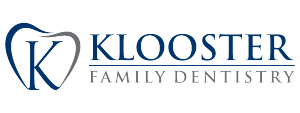Dental X-Rays in Holly Springs & Raleigh, NC
Knowledge is power. When you’re dealing with something as complex as the mouth, it becomes even more important. While many dental problems are obvious to the naked eye, some are in places you and your dentist can’t see.
This is why radiography – more commonly called an x-ray – is so critical to preventative care. It helps identify problems in the innermost parts of your mouth, places a superficial exam cannot reach. Klooster Family Dentistry uses radiography as a key step in most of our dental care.
Technology
Radiography works through a simple principle. A machine shoots electromagnetic rays through the area that needs to be observed. On the other side of the area, photographic film captures some of the rays and forms an image.
Because x-rays require radiation, technology has focused on reducing the amount required. Klooster Family Dentistry’s radiography machines use a digital sensor in place of film, which means our images require 90% fewer radiation. Digital imaging makes your x-rays instantly available, and provides far more detailed than old film technology.
Areas Examined
X-rays let your dentist and hygienist view hard-to-reach areas, including:
- Spaces between the teeth, or where they touch.
- Underneath existing fillings and crowns.
- The bones beneath your gums.
- The pulp, the core of your teeth made of nerves and blood vessels.
Cleanings and superficial exams identify obvious plaque and tartar build-up, and a dental explorer can find most cavities. But the most severe problems – infection, abscesses, and gum disease – occur where we can’t see them. Bone loss can occur far beneath your gums at the alveolar process, a ridge of bone that anchors your teeth. Calculus – a form of plaque buildup – can extend far beyond the surface and down into the roots of your teeth.
What it Prevents
A radiograph identifies symptoms of dental problems before they become severe. The knowledge they provide can prevent or lessen the effects of:
- Gum disease: calculus and bone loss can be traced back to periodontitis, or gum disease. The microscopic bacteria in this disease can cause problems underneath your gum line.
- Bone decay: your teeth sit on a ridge called the alveolar process. When this ridge decays, your teeth become less stable and more vulnerable.
- Cavities: not all cavities are easy to find! They may manifest as a hollow within a tooth, or even below the gum line. While they’re invisible to the naked eye, they’re obvious on an x-ray.
At Klooster Family Dentistry, we believe prevention is the best medicine. Our radiography services help us give you the preventative care you deserve.
